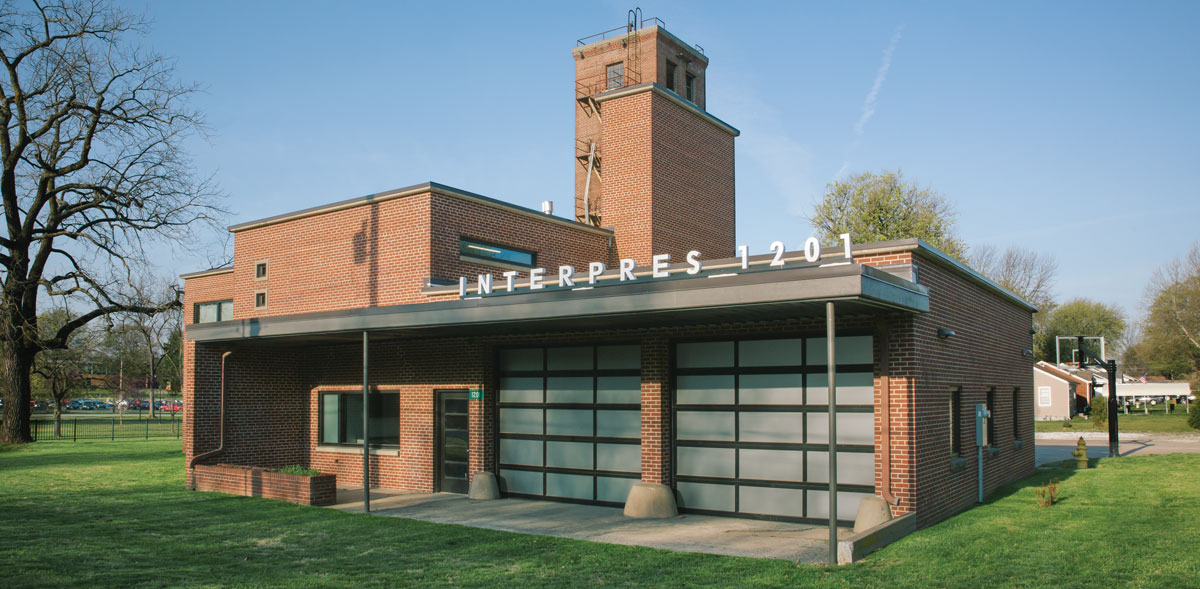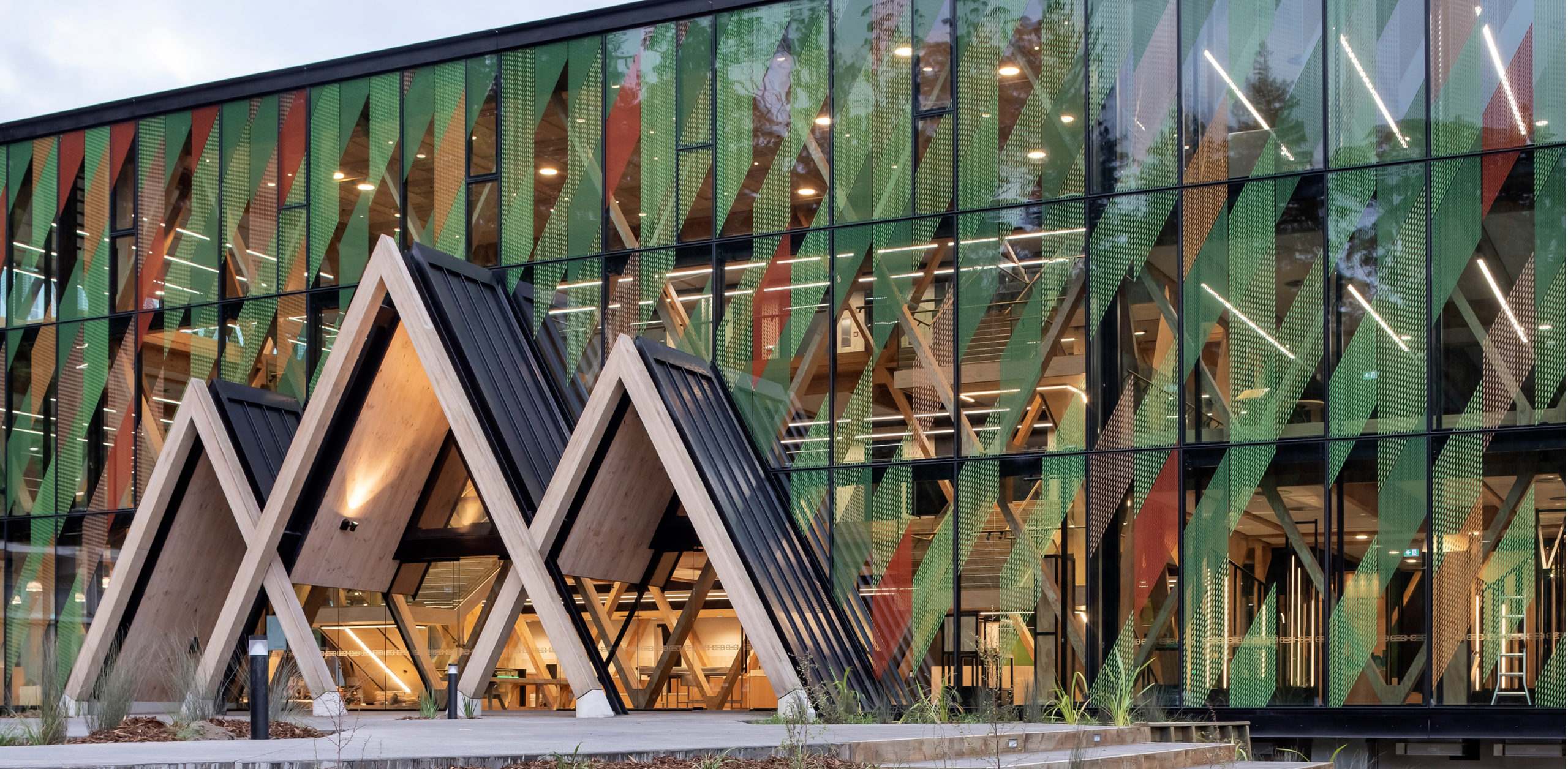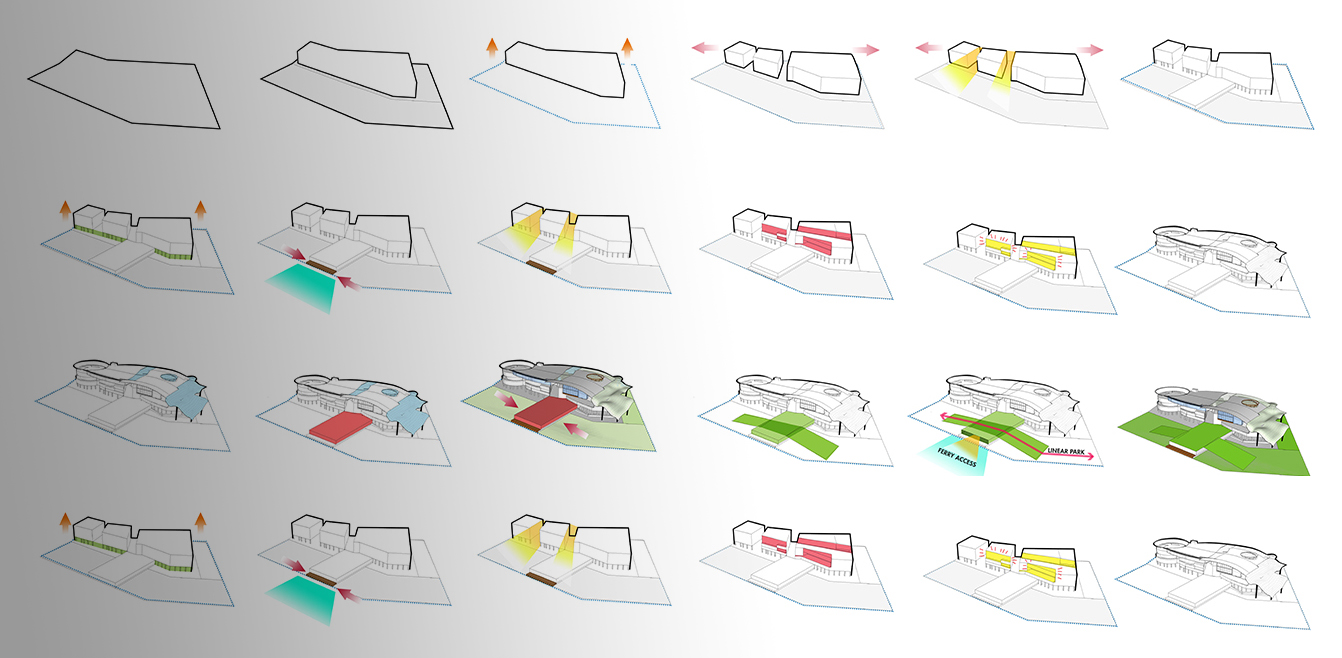Adaptive reuse projects can be challenging for the simple fact that an existing building presents inherent constraints instead of a blank slate. Limitations, however, have a funny way of resulting in some of the most creative designs. Such was the case for the recent transformation of a 1950s-era fire station into a new office for the engineering firm Interpres Building Solutions.
Acting as both client and lead design engineer, Interpres was inspired to move into the vacant firehouse in Springfield, Missouri, due to its striking aesthetics with simple lines. “I’d always noticed this building boarded up and looking a little lost, and really liked the architecture,” said Brad Palmer, principal and lead engineer for Interpres. “It’s a neat building; we’re glad we were the ones that got to renovate it and have it for our own.”
Preserving and enhancing the existing building’s midcentury modern details in the design of their new office meant finding a way to accentuate its clean lines, square corners and basic geometric shapes with new architectural features. To accomplish this, Interpres utilized a variety of sleek, crisply detailed lighting fixtures from Williams in innovative ways to breathe new life into the building.
As the first space to be seen by both visitors and employees, the reception area required special attention. Williams’ linear MX4R fixture steals the scene here, wrapping across an inside corner from the wall and onto the ceiling, creating a distinct and eye-catching feature for this important space.

Image courtesy of Williams
When applied creatively, as they are here, Williams’ linear lights can be designed to turn corners, create unique shapes or follow a snaking path through nearly any space. A variety of lenses, color temperature and lumen output can further enhance desired effects. In this case, Interpres’ feature wall fixture was specified with Tunable White, allowing a seamless adjustment of color temperature to match the time of day.
One aspect of this building revitalization project that couldn’t be ignored was a circular opening between the first and second floors — a vestige of the fire pole once used by the former occupants. Interpres opted to keep this singular detail intact, although it’s now enhanced with a sculptural steel plate featuring the firm’s logo and surrounded with square downlights recessed into a drywall ceiling.
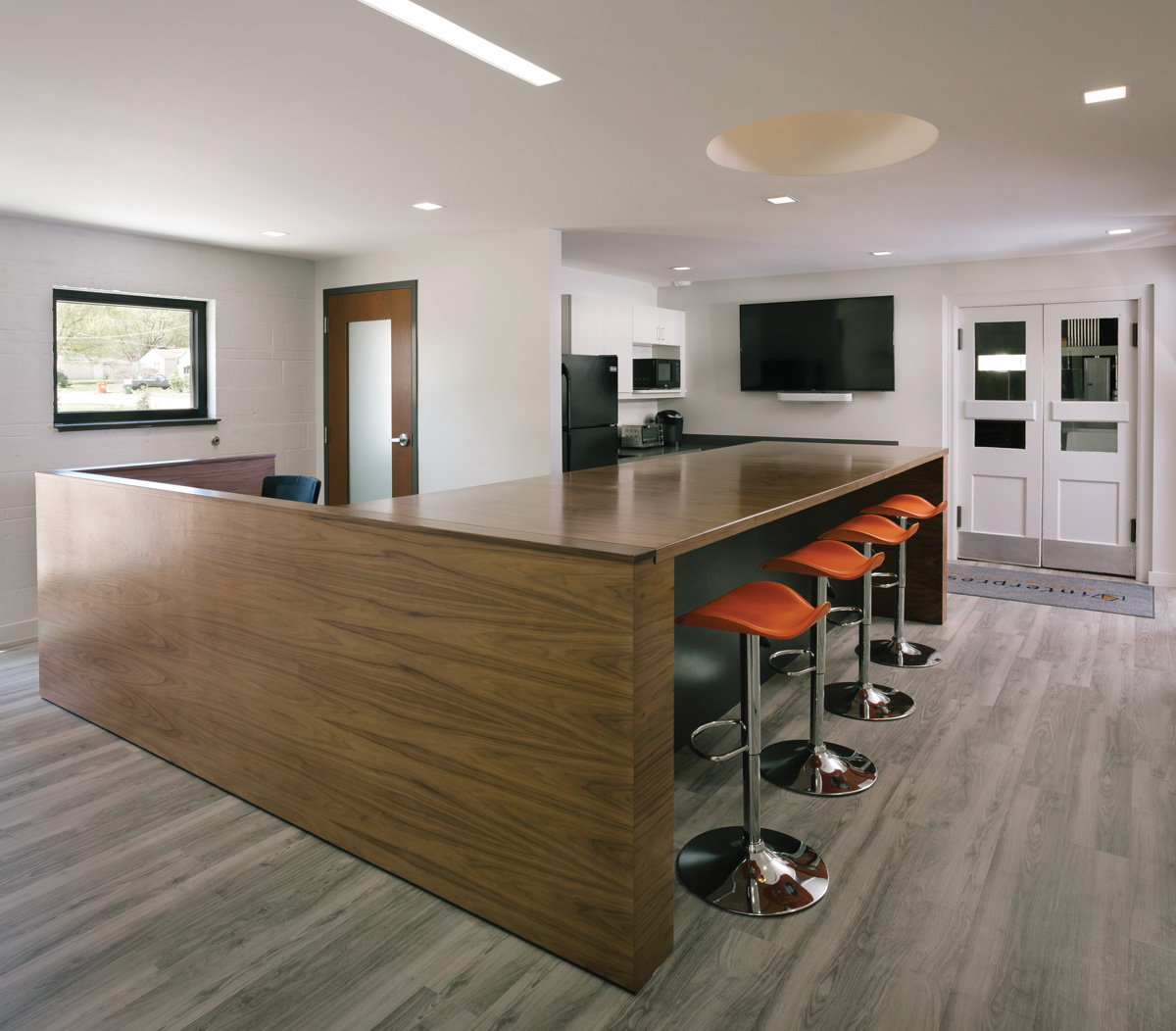
Image courtesy of Williams
Williams’ low-profile 6DS downlight was used in this location, with the similar 4DS fixture placed in adjacent rooms with drop ceilings. These unobtrusive, square lights were desirable for their ability to blend in with the fire station’s existing characteristics. Specified with a flush trim, they appear to disappear against the building’s notable features, although the same fixtures can also be specified with open, recessed or angled trims.
These downlights are equipped with Tunable Color, and can be adjusted to emit any hue on the spectrum of visible light. “That was an important spec for us,” Palmer said. While color-changing lights are often used for corporate branding or events, Interpres will utilize this feature to conduct in-office lighting demonstrations for their clients. “As we have clients come into our site they can see some of the possibilities of what they can do with different lighting systems,” he explained.
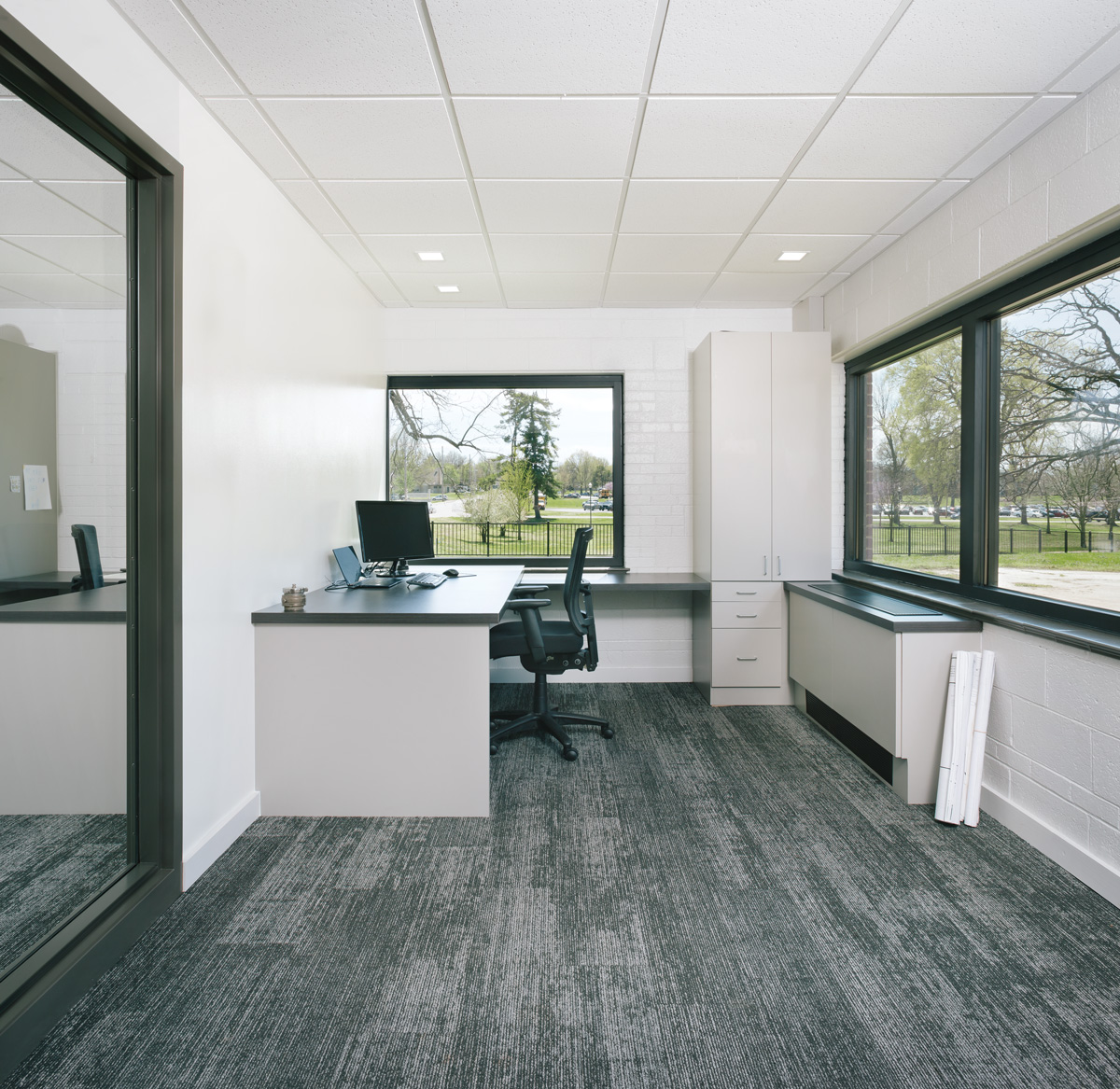
Image courtesy of Williams
The square proportions of the downlights mirror a set of small, punched square windows set vertically along an outside wall of the building’s staircase. While Interpes elected to keep those windows in place, they removed an interior wall surrounding the staircase to let in more light. Additional vertical space was gained by removing an old plaster ceiling on the upper floor, allowing Williams’ 75S strip lights to be suspended between a series of exposed open-web steel joists.
Williams’ 75S fixture is a cleanly detailed strip light with square corners and hard edges that match the context of the firehouse. Even a square lens was utilized in this case, although the same fixture can be specified with round and flat lenses. Likewise, while Interpres chose to suspend these lights between the exposed joists, Williams’ 75S can also be surface mounted if desired.
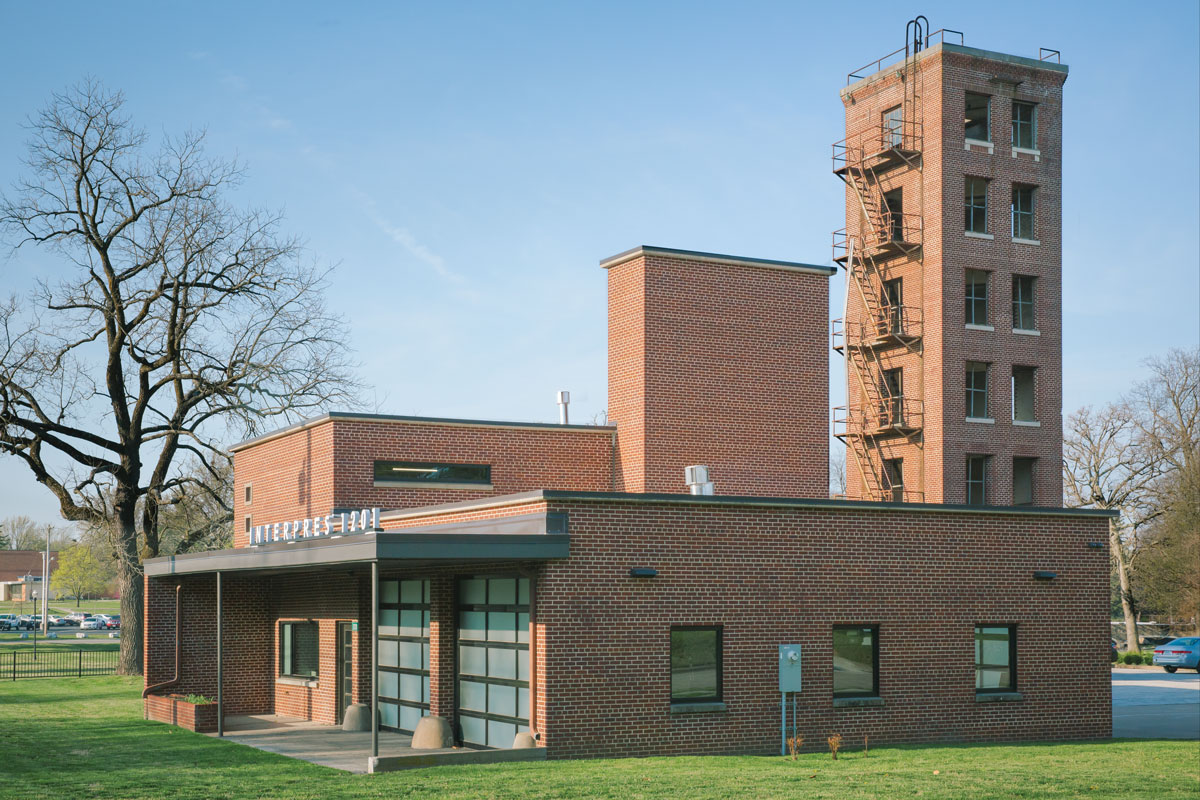
Image courtesy of Williams
Following the renovation, Interpres moved into their new office in March 2019. The aesthetics of their revitalization greatly complement the building’s original design, in no small part due to the selection of contextually appropriate lighting fixtures from Williams.
Head over to Williams to check out their wide range of lighting fixtures and the innovative ways they can be used in design projects.
Architects: Want to have your project featured? Showcase your work through Architizer and sign up for our inspirational newsletter.
